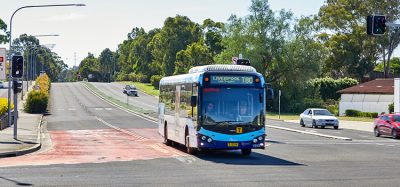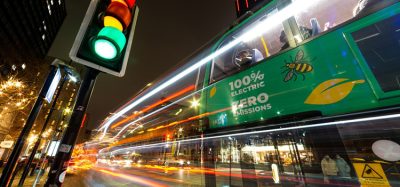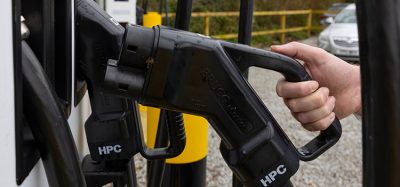Putting the customer at the heart of everything we do
- Like
- Digg
- Del
- Tumblr
- VKontakte
- Buffer
- Love This
- Odnoklassniki
- Meneame
- Blogger
- Amazon
- Yahoo Mail
- Gmail
- AOL
- Newsvine
- HackerNews
- Evernote
- MySpace
- Mail.ru
- Viadeo
- Line
- Comments
- Yummly
- SMS
- Viber
- Telegram
- Subscribe
- Skype
- Facebook Messenger
- Kakao
- LiveJournal
- Yammer
- Edgar
- Fintel
- Mix
- Instapaper
- Copy Link
Posted: 15 February 2024 | Mark Pavlides - Govia Thameslink Railway | No comments yet
Mark Pavlides, Chief Customer Officer at Govia Thameslink Railway, shares his insight into the transformative initiatives that are reshaping the passenger experience and driving sustainable growth in rail travel, prioritising safety, cleanliness and customer satisfaction.
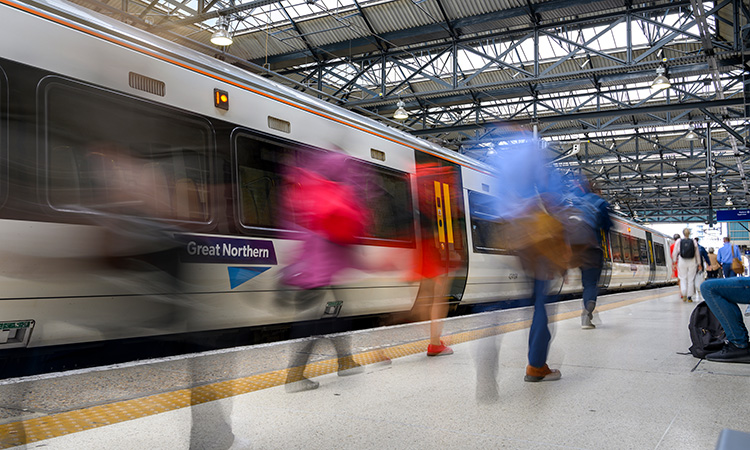

Credit: Govia Thameslink Railway
As the Chief Customer Officer, can you share specific initiatives or strategies that Govia Thameslink Railway has implemented under your leadership to enhance the overall passenger experience, and how do these initiatives align with the company’s commitment to delivering improved customer satisfaction?
Having joined Govia Thameslink Railway (GTR) in the summer of 2023, I’m still very much in my infancy, but within this short time I feel very privileged to have supported the business with some major achievements. Thinking more longer-term, I am now finalising strategies that will put the customer at the heart of everything that we do, as well as ensure future financial strength.
A customer-centric business will help to keep communities connected and enable the economy to grow”
Almost a million people travel on our services every day, so we have a big responsibility to get our customer approach right. A customer-centric business will help to keep communities connected and enable the economy to grow.
Understanding the needs of our customers – not just now, but in the future – has led us to open a brand-new station in London, our first for more than a decade. The station supports the development of Brent Cross Town and gives people living in Brent Cross a direct link to central London in as little as 12 minutes.
Much of the railway architecture in the UK is beautiful and historic, and with that comes significant work to keep them maintained and fit for current use. 2023 saw the completion of a huge upgrade at one of our busiest train stations: Gatwick Airport (LGW). Working together with Network Rail, we opened a bigger and better station with a second concourse and improved entrance, doubling space for millions of passengers.
We operate in a challenging environment. We don’t own the trains that we run, or the infrastructure that they run on and, although we manage train stations, we don’t own them. Customers are our biggest asset, so it’s vital that they are at the heart of everything that we do. With a network the size of Belgium, we don’t always get it right, but we are moving in the right direction – proven by the fact that our complaints rate is half the industry average, is continuing to fall and is far lower than other industries. SQR reports also show that we are tracking at 5% above target for staff helpfulness, which is great to see1.
In today’s dynamic and technology-driven environment, how has Govia Thameslink Railway leveraged innovative technologies to enhance the passenger experience?
We still have some catching up to do to when it comes to leveraging technology to keep up with the everchanging needs of our customers. Whilst it may not be easy to upgrade centuries-old infrastructure, there are other ways that we can modernise the railway. This includes simple steps for each step of our customers’ journeys, like making sure that it’s quick and easy to pass through our stations with digital tickets.
We’re replacing traditional lineside signalling with European Train Control System technology, which will bring digital signalling to the East Coast Main Line and provide greater reliability for customers”
In November 2023, we completed a fit-out of barcode readers to every single ticket gate at each of the stations that we manage. A total of 1,420 barcode readers are now in place so that customers with e-tickets on their smartphone can simply scan and go. Customers increasingly prefer digital tickets, with the number of people buying digital tickets over traditional orange tickets more than doubling in the past four years. This is good for customers and good for us.
We’re also currently undergoing a landmark project to deliver the next generation of train travel. We’re replacing traditional lineside signalling with European Train Control System (ETCS) technology, which will bring digital signalling to the East Coast Main Line and provide greater reliability for customers.
As well as working in partnership with the wider industry, we also test out new technologies with external organisations to strengthen our customer experience. Accessible travel is something we take very seriously and, in addition to our everyday responsibilities to follow the Accessible Travel Pledge, we also look at new and emerging technology to improve accessible travel on our network.
In 2023, we were the first train operator to introduce a trial of the Aira App, which connects blind and partially sighted people to a remote advisor who then uses the customer’s smartphone camera to guide them around the train station.
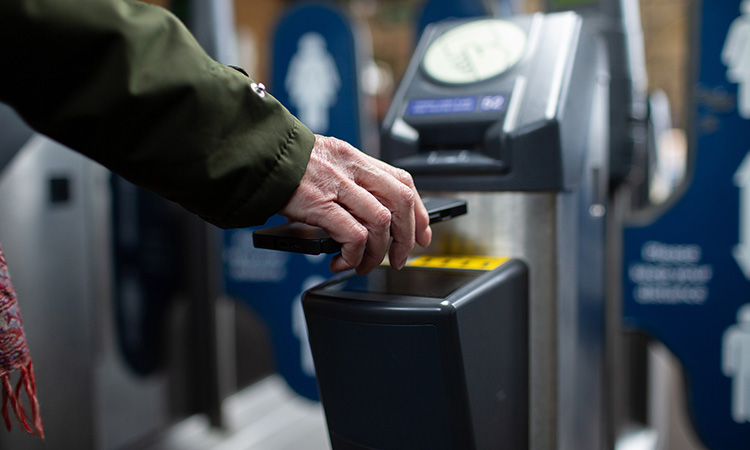

Credit: Govia Thameslink Railway
Customer feedback is crucial for understanding their needs and preferences. How does Govia Thameslink Railway actively gather and analyse customer feedback, and how has this feedback influenced decision-making processes to make tangible improvements in the passenger experience?
Any organisation that doesn’t listen to its customers is not going to prosper in the long-term. As we improve our offering, it’s about prioritising the opportunities that we go after based on the needs of our customers.
We are never short of feedback and areas to improve – our challenge is prioritising where we should focus resources in order to make the best changes”
We capture feedback a number of ways at GTR, from sending out customer surveys and monitoring topics in our contact centre, to stakeholder engagement, public consultations, working closely with the Department for Transport (DfT) and monitoring our social media channels 24/7, which is often our most immediate feedback. We also utilise industry feedback to see what the wider travelling customer base are saying.
In addition, we also bring the voice of the customer directly into some of our senior management forums by inviting customers along to tell us directly what we’re doing well, and what we need to improve on.
I’ve found rail to be more emotive than other industries, in that customers and stakeholders are heavily invested in it on a personal level. We are never short of feedback and areas to improve – our challenge is prioritising where we should focus resources in order to make the best changes.
How does Govia Thameslink Railway collaborate with other stakeholders, such as local authorities or technology partners, to streamline the passenger journey and address potential challenges?
The GTR network spans 11 counties, and as well as working with schools, hospitals, councils, charities and airports, we fund four Community Rail Partnerships”
Rail is an incredibly complex and matrixed industry, and we invariably need multiple stakeholders to make changes and improve. There are a number of ways that we collaborate with stakeholders – a key one is our MP drop-in sessions that take place throughout the year. This is a simple and effective way to hear about public concerns from constituents and provides an opportunity for us to discuss them in a productive setting.
In Summer 2023, we invited customers and stakeholders to share their feedback about proposals to change timetables on the West Coastway line (the route west from Brighton along the south coast). Over 13 weeks, we received 460 responses, held seven public events at stations and met with stakeholders across the route. Following the feedback, we have made changes which will better suit the needs of our customers. It has been a truly collaborative approach that will benefit many people, and we look forward to announcing more soon.
The GTR network spans 11 counties, and as well as working with schools, hospitals, councils, charities and airports, we fund four Community Rail Partnerships (CRPs) who promote rail travel and help communities to have a voice in railway development.
We have just closed applications for the ‘Your Station, Your Community’ fund, now in its second year. In 2023, we awarded almost £400,000 to 19 charities that are launching community projects across our network.
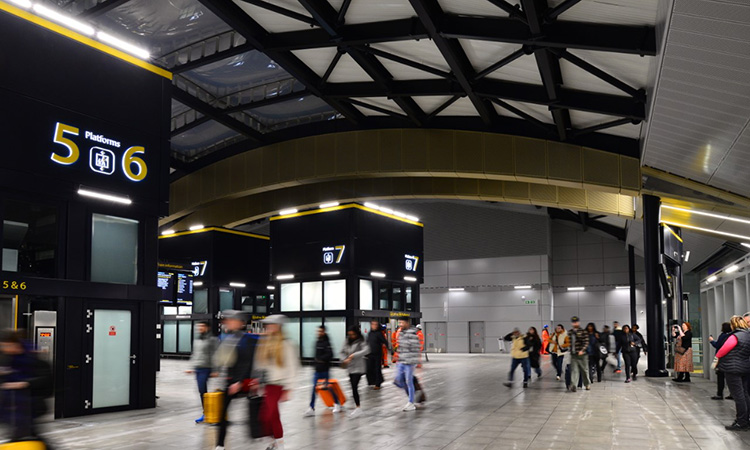

Credit: Govia Thameslink Railway – Gatwick station upgrade
How does GTR prioritise and ensure a safe and clean environment for passengers? Can you share any specific initiatives or protocols in place to enhance the overall wellbeing of passengers during their journey?
A safe and clean environment are of fundamental importance to our customers and colleagues.
We are working to deter unwanted sexual behaviour, protect vulnerable people, prevent and prosecute staff assault and boost confidence with the travelling public”
We have a very strong partnership with the British Transport Police (BTP) and we’re proud to have signed the collaboration agreement for the second year running in September 2023. Together, we are working to deter unwanted sexual behaviour, protect vulnerable people, prevent and prosecute staff assault and boost confidence with the travelling public through increased presence and engagement.
We are also planning to increase the number of Rail Enforcement Officers that we have on the network. They do a brilliant job and work closely with the BTP on joint patrols to tackle antisocial behaviour, fare evasion and crime. Our officers also go into schools to deliver talks to young people to encourage safe use of the railway.
Safety of staff and customers is our number one priority and always influences decision-making. As well as creating a safe environment for people to travel in, we want it to be clean, too. Our train presentation team, along with frontline staff, work together to maintain train and station cleanliness, which I’m pleased to say are both ahead of targets1.
Graffiti is a real problem for the railways, and it costs GTR over £2 million pounds in damage every year. Our train presentation teams play a huge part in tackling graffiti and work for hours to clean it off of trains, so that they can stay in service and provide our customers with a reliable service.
The post-pandemic era has brought about changes in travel patterns and passenger expectations. How has GTR adapted its strategies to meet the evolving needs of passengers in this new normal?
To tap into our new hybrid way of life, we trialled a loyalty scheme in January 2023 for the first time ever. We’ve also flexed our Advance Ticket offering based on travel trends”
It’s no surprise that travelling patterns have changed drastically since COVID-19. The great news is that customers have absolutely returned to rail. Our data shows that 76% people living within a 10-minute radius of our stations have used train travel in the last three months and 88% in the last three years. Our focus is, therefore, on increasing frequency by encouraging customers to use the railways for more of their journeys.
With many people choosing to work a more hybrid week, these incremental journeys often come in the form of additional leisure trips, whether that is in the evenings, at the weekends or during holidays. We are, however, also looking at commuter journeys to destinations outside of London, where people might be choosing to commute by car currently.
To tap into our new hybrid way of life, we trialled a loyalty scheme in January 2023 for the first time ever. We’ve also flexed our Advance Ticket offering based on travel trends. With 40,000 fewer commuters travelling into the office on Mondays, and 90,000 fewer travelling in on a Friday, we encouraged people to consider switching up their travel patterns by offering Advance Tickets during peak times on these two days of the week.
We’re soon to introduce Weekly Capping on our network, which works in the same that an Oyster card does. Once you’ve reached the spending cap, each journey thereafter will be free. Enabled on GTR Smartcards, this is another example of offering customers greater choice and flexibility with tickets, in turn helping to encourage rail travel.
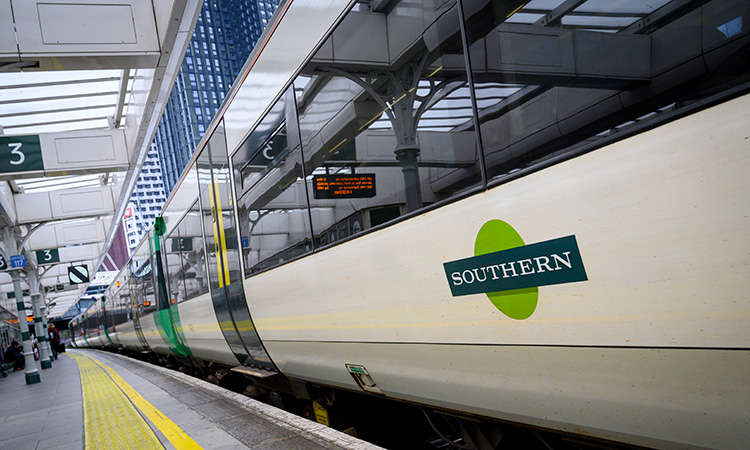

Credit: Govia Thameslink Railway
As the travel industry evolves, sustainability becomes an increasingly important factor. How does Govia Thameslink Railway plan to integrate eco-friendly practices and initiatives into its operations to ensure a more environmentally conscious passenger experience in the future?
The Net Zero Strategy sets out our plan to replace the very few diesel trains that are still in use, working in collaboration with the UK government and Network Rail”
The great thing about trains is that not only are they quick and convenient, but electric trains are also the greenest mode of public transport and, thanks to 97% of our fleet being electric, GTR’s carbon footprint is very small.
That being said, any type of carbon footprint is no good thing, which is why we have launched a roadmap to become net zero.
The Net Zero Strategy sets out our plan to replace the very few diesel trains that are still in use, working in collaboration with the UK government and Network Rail. We’re also planning to replace gas with air or ground heat pumps and generate our own energy from solar roofs on our depots, amongst other simple measures like using smart meters and switching to greener forms of energy where we can.
We’re helping customers to travel more sustainability from end-to-end, too, with the installation of electric vehicle (EV) charging at car parks and bicycle parking at stations.
We all have a responsibility to protect our planet, and a lot of our eco-friendly initiatives couldn’t be carried out without the help of partners. For example, in 2023, we started working with the London Wildlife Trust to monitor, protect and enhance biodiversity levels at sites across our network. In addition, our public community fund (as mentioned earlier) has a specific category for projects that have a positive impact on the environment.
With the ongoing evolution of transportation trends and consumer behaviours, how does Govia Thameslink Railway anticipate and plan to adapt its services to meet the changing expectations of future passengers, ensuring that the railway remains a preferred mode of transportation in the years to come?
We want GTR to be fit for the future, and we want to create a truly customer-focused railway that people not only chose to travel on, but one that they want to come back to, time and time again”
We want GTR to be fit for the future, and we want to create a truly customer-focused railway that people not only chose to travel on, but one that they want to come back to, time and time again.
With this comes its fair share of challenges, but we’re lucky to be part of a wider industry that has a shared focus on futureproofing, and we’ve got a responsibility to help to lead the way as the UK’s largest train operating company (TOC).
We know that the cost of rail can be a barrier when people are considering how to travel and can feel overwhelmed with the fares structure. These are things that are being looked at on a national level, but something that we can work on now is greater visibility and awareness of flexible options for our customers.
These include things like Off Peak and Super Off Peak tickets, Advance Fares, Flexi Season for part-time commuters, as well as great deals for families, too, like the Kids for £2 offer, and 2FOR1 tickets that enable discounted entry into some of the UK’s best attractions with a valid train ticket.
Ongoing industrial action on the railways continues to have a negative effect on reputation, but we are incredibly resilient, and I’m pleased that in the latest round of action, we have at least been able to provide a limited amount of service to support vital airport travellers on our network.
There are lots of good things to come for our customers in 2024 and, whilst some are bigger and bolder ambitions, we’re concentrating on getting the basics right so that people love travelling with us. It’s not going to be an easy task, but we have the right foundations in place and it’s now about harnessing that great customer insight and making tangible improvements for everyone that travels with us.
References
- SQR data relates to mandatory inspections carried out across the GTR network to measure customer satisfaction.


Related topics
Accessibility, Passenger Experience, Public Transport, Sustainable Urban Transport, Ticketing & Payments
Related modes
Rail
Related cities
London
Related countries
United Kingdom
Related organisations
Govia Thameslink Railway (GTR), London Wildlife Trust, Network Rail, UK Government
Related people
Mark Pavlides




